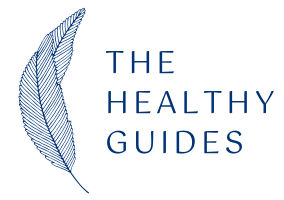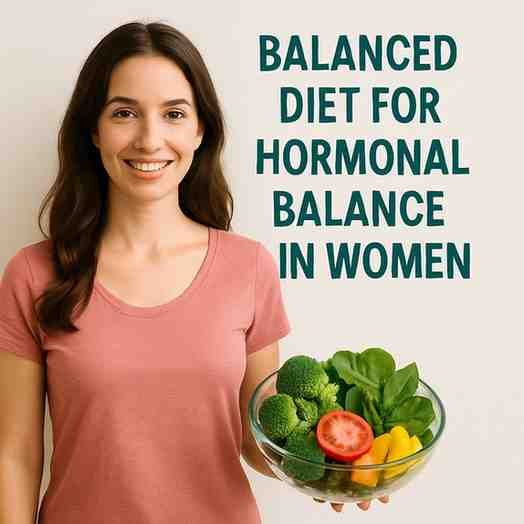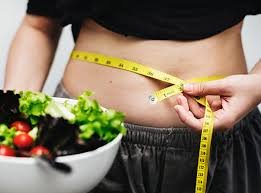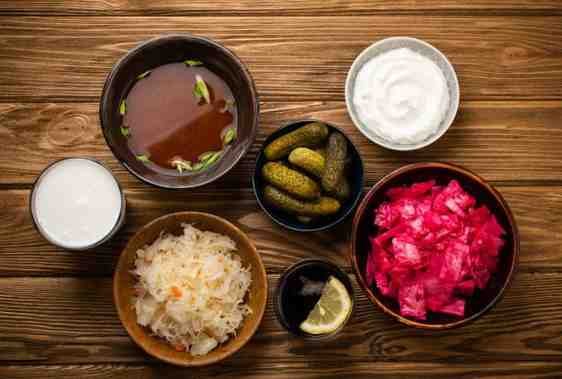Balanced Diet for Hormonal Balance in Women
Introduction
Hormones influence almost every function in a woman’s body — from energy, mood, and sleep to weight, skin, and fertility. When they’re out of sync, the symptoms can feel overwhelming: stubborn belly fat, irregular periods, acne, or constant fatigue. The good news? A balanced diet for hormones can help restore stability naturally. By choosing the right foods, you can regulate blood sugar, support your liver, and ease issues like PMS, PCOS, and perimenopause. This article explores practical meal plans, hormone-friendly foods, and lifestyle tips to bring your body back into balance.
The good news? Food can help. A balanced diet isn’t just about losing weight — it’s about giving your body the nutrients it needs to regulate hormones naturally. In this article, we’ll explore practical meal plans, specific foods to eat (and avoid), and diet strategies for life stages and conditions like PCOS, perimenopause, and hormonal acne.
Let’s dive in.
The Hormone Reset: A 7-Day Meal Plan to Balance Hormones Naturally
When hormones spiral out of balance, women often feel stuck in cycles of fatigue, sugar cravings, poor sleep, or weight gain. A balanced diet for hormones isn’t a fad trend but a structured, nutrient-rich way of eating that helps stabilize blood sugar, lower stress hormones like cortisol, and support the liver — the organ responsible for detoxifying and metabolizing excess hormones
The 7-day meal plan below provides balanced meals with protein, fiber, and healthy fats. These macronutrients keep blood sugar steady, which is essential because blood sugar spikes and crashes are one of the fastest ways to throw hormones like insulin and cortisol out of balance.
Sample 7-Day Hormone Reset Plan
Day 1
- Breakfast: Overnight oats with chia seeds, blueberries, and almond butter. The fiber supports estrogen detox, while the chia seeds provide omega-3s.
- Lunch: Quinoa salad with chickpeas, spinach, cucumbers, olive oil, and lemon. This mix of fiber and healthy fat helps prevent energy crashes.
- Dinner: Grilled salmon with roasted broccoli and sweet potato. The broccoli helps metabolize estrogen, and salmon provides omega-3s for inflammation control.
- Snack: A small handful of walnuts and pumpkin seeds for magnesium and zinc.
Day 2
- Breakfast: Greek yogurt with flaxseeds, strawberries, and a drizzle of honey. Flaxseeds bind excess estrogen, and strawberries add antioxidants.
- Lunch: Lentil soup with whole-grain bread. Lentils are rich in plant-based protein and iron.
- Dinner: Baked chicken breast with brown rice and steamed carrots. A clean, balanced meal that keeps insulin levels stable.
- Snack: Apple slices with almond butter for sustained energy.
Day 3
- Breakfast: Spinach, banana, and protein smoothie blended with almond milk. This combo delivers quick energy without spiking blood sugar.
- Lunch: Tuna salad wrap with whole-grain tortilla and leafy greens. Omega-3s from tuna reduce inflammation.
- Dinner: Stir-fried tofu with kale, bell peppers, and quinoa. Plant-based protein plus cruciferous veggies make this a hormone-friendly dinner.
- Snack: A few pieces of dark chocolate (70%+) with green tea for an antioxidant boost.
Day 4
- Breakfast: Avocado toast on whole-grain bread with boiled eggs. Avocado provides healthy fats while eggs are rich in B vitamins.
- Lunch: Hummus with carrot and cucumber sticks, paired with whole-grain pita. The fiber helps detoxify excess hormones.
- Dinner: Turkey meatballs served with zucchini noodles and tomato sauce. This low-carb, high-protein meal supports weight and hormone management.
- Snack: A small bowl of Greek yogurt topped with pumpkin seeds.
Day 5
- Breakfast: Chia pudding with walnuts, cinnamon, and pomegranate seeds. Cinnamon supports blood sugar balance, while pomegranate seeds help with estrogen metabolism.
- Lunch: Brown rice with shrimp, stir-fried broccoli, and sesame oil. A mineral-rich, high-protein option.
- Dinner: Lentil curry with cauliflower rice. A warming, fiber-rich dish to support digestion and detoxification.
- Snack: A boiled egg with a handful of cherry tomatoes.
Day 6
- Breakfast: Omelet with spinach, mushrooms, and tomatoes. A nutrient-dense, high-protein start to the day.
- Lunch: Grilled chicken wrap with avocado, kale, and hummus. The combination of lean protein and greens stabilizes blood sugar.
- Dinner: Salmon bowl with quinoa, cucumber, sesame seeds, and a drizzle of tahini. This meal is rich in magnesium and protein.
- Snack: Roasted chickpeas for a crunchy, fiber-packed snack.
Day 7
- Breakfast: Smoothie bowl topped with flaxseeds, pumpkin seeds, and mixed berries. The antioxidants and omega-3s make this a hormone superstar.
- Lunch: Vegetable and bean stew with whole-grain bread. Packed with fiber and plant-based protein.
- Dinner: Grilled lamb chops with roasted Brussels sprouts and mashed sweet potato. Rich in zinc and iron, both essential for hormone health.
- Snack: Edamame with a sprinkle of sea salt.
This reset isn’t about restriction but about nourishing the body with whole, real foods. Many women notice better energy, clearer skin, and reduced PMS symptoms after just one week.
PCOS Diet Plan: Foods to Eat and Avoid to Restore Hormonal Balance
Polycystic Ovary Syndrome (PCOS) is one of the most common hormonal disorders in women. Its root cause often involves insulin resistance — when the body’s cells don’t respond properly to insulin, leading to elevated blood sugar and high androgen (male hormone) levels. This imbalance causes irregular cycles, acne, and difficulty losing weight. A balanced diet for hormones can improve insulin sensitivity, reduce inflammation, and help women with PCOS restore cycle regularity and manage symptoms more effectively.
Foods to Include in a PCOS Diet
- Low-GI Carbs: Quinoa, barley, sweet potatoes — these release energy slowly, preventing blood sugar spikes.
- Fiber-Rich Veggies: Kale, zucchini, broccoli — fiber helps eliminate excess estrogen and supports digestion.
- Healthy Fats: Avocado, olive oil, walnuts — these improve insulin sensitivity and reduce inflammation.
- Lean Proteins: Chicken, turkey, fish, lentils — protein stabilizes appetite hormones and supports muscle health.
- Anti-inflammatory Spices: Turmeric, cinnamon, ginger — these naturally reduce inflammation and help regulate insulin.
Foods to Avoid in a PCOS Diet
- Refined sugar (sodas, candy, pastries).
- Processed meats and fried fast foods.
- White bread and pasta.
- Excess dairy (for some women, it can worsen acne and bloating).
Women who adopt a PCOS-friendly diet often report improved cycle regularity, reduced bloating, and easier weight management within a few months.
5 Foods to Reduce Estrogen Dominance and Alleviate PMS Symptoms
Estrogen is vital, but too much relative to progesterone leads to estrogen dominance, which causes PMS, breast tenderness, mood swings, and heavy bleeding. A balanced diet for hormones can make a big difference, since certain foods help your body process and clear excess estrogen more effectively.
Top 5 Estrogen-Balancing Foods
- Broccoli & Cruciferous Vegetables – contain compounds like DIM (diindolylmethane) that help the liver break down estrogen.
- Flaxseeds – high in lignans, which bind to estrogen receptors and promote balance.
- Chia Seeds – rich in fiber, which supports elimination of excess estrogen.
- Green Tea – packed with catechins, which improve liver detox pathways.
- Berries – antioxidant-rich and help reduce oxidative stress linked to PMS symptoms.
Adding these foods daily can naturally reduce PMS intensity and support overall hormonal health.
A Beginner’s Guide to the Hormone Balancing Diet for Women Over 40
Once women hit their 40s, hormonal shifts accelerate. Perimenopause often begins, leading to declining estrogen and progesterone levels. This can bring on symptoms like hot flashes, weight gain, and mood swings.
Key Dietary Strategies for Women Over 40
- Phytoestrogens: Plant-based estrogens from soy, chickpeas, and flaxseeds can help ease hot flashes and vaginal dryness.
- Calcium and Vitamin D: As estrogen drops, bone density declines. Incorporating dairy, fortified foods, or supplements helps protect against osteoporosis.
- Protein: Women over 40 lose muscle mass faster; aim for 20–30g of protein per meal.
- Omega-3 Fats: Found in salmon and walnuts, they support heart and brain health during this transition.
Women who follow a hormone-balancing diet at this age often find it easier to manage weight, maintain energy, and ease menopause symptoms.
Stubborn Belly Fat? How to Fix Hormonal Weight Gain with Your Diet
Belly fat in women is often not just about calories — it’s about hormones. High cortisol (from stress) and insulin resistance both encourage fat storage around the abdomen. Menopause-related estrogen decline also redistributes fat to the belly. A balanced diet for hormones helps regulate cortisol, improve insulin sensitivity, and reduce stubborn belly fat naturally.
Dietary Fixes for Hormonal Belly Fat
- Start your day with protein-rich breakfasts (eggs, smoothies, yogurt) instead of sugary cereals.
- Limit alcohol, which directly promotes belly fat.
- Add magnesium-rich foods like spinach, almonds, and pumpkin seeds to reduce cortisol.
- Stay hydrated — dehydration can increase cortisol and make cravings worse.
When paired with stress management and regular strength training, these dietary changes make belly fat much easier to tackle.
The Ultimate Shopping List for Hormone-Friendly Foods
Want to simplify eating for hormone balance? Stock your pantry and fridge with these hormone-supportive staples:
- Proteins: salmon, tuna, chicken, eggs, lentils, beans.
- Healthy Fats: olive oil, avocado, coconut oil, walnuts, flaxseeds.
- Carbs: quinoa, oats, brown rice, sweet potatoes.
- Vegetables: broccoli, kale, spinach, cauliflower, carrots.
- Fruits: blueberries, apples, bananas, pomegranate, cherries.
- Extras: cinnamon, turmeric, ginger, pumpkin seeds, green tea.
Shopping with intention ensures you always have hormone-friendly options available, reducing the temptation of processed foods.
Foods to Lower Cortisol: A Diet Plan for Stressed-Out Hormones
Cortisol, the “stress hormone,” is lifesaving in emergencies but harmful when chronically elevated. High cortisol can disrupt sleep, cause sugar cravings, and lead to belly fat.
Cortisol-Lowering Foods
- Dark Chocolate: Rich in flavonoids that calm stress response.
- Green Tea: Contains L-theanine, which promotes relaxation.
- Fatty Fish: Omega-3s reduce inflammation caused by stress.
- Leafy Greens: High in magnesium, which calms the nervous system.
- Berries: Packed with antioxidants to protect the body from stress-related damage.
Replacing coffee with green tea and snacking on berries instead of chips can have a noticeable effect on stress levels within weeks.
Perimenopause Diet: What to Eat to Balance Hormones and Reduce Hot Flashes
During perimenopause, estrogen levels fluctuate unpredictably, triggering hot flashes, night sweats, and mood swings. Diet plays a crucial role in easing these symptoms.
Best Foods for Perimenopause
- Soy and Flaxseeds: Provide phytoestrogens that mimic estrogen and ease symptoms.
- Calcium-Rich Foods: Leafy greens, dairy, fortified plant milk to protect bone health.
- Omega-3s: Salmon, chia seeds, walnuts to support brain function and reduce inflammation.
- Whole Grains: Keep blood sugar steady, reducing mood swings.
Foods to Avoid
- Spicy dishes, caffeine, and alcohol often trigger hot flashes and worsen night sweats.
Women who adjust their diets often notice fewer hot flashes and more stable energy levels.
Hormonal Acne Diet: What to Eat for Clear Skin from the Inside Out
Hormonal acne is most common along the jawline and chin, especially before periods. Diet can help reduce flare-ups by supporting hormone balance and lowering inflammation.
Acne-Fighting Foods
- Omega-3s: Salmon, sardines, walnuts reduce inflammation linked to acne.
- Zinc: Pumpkin seeds, chickpeas, and oysters support skin healing.
- Antioxidants: Berries, green tea, and dark chocolate fight oxidative stress.
- Probiotics: Yogurt, kefir, sauerkraut support gut bacteria, which regulate estrogen.
Foods to Avoid
- Sugary foods and refined carbs fuel acne-causing insulin spikes.
- Dairy products may worsen acne for some women.
When combined with skincare, dietary shifts can dramatically improve complexion over time.
The Top 10 Hormone-Balancing Snacks for Stable Energy All Day
Snacking smart keeps hormones and energy stable throughout the day. These options balance protein, fiber, and healthy fats:
- Apple slices with almond butter.
- Greek yogurt with flaxseeds.
- Chia pudding with walnuts and cinnamon.
- Trail mix with pumpkin seeds and dark chocolate.
- Hummus with carrot and cucumber sticks.
- Boiled eggs with avocado slices.
- Cottage cheese with pineapple.
- Smoothie with spinach, banana, and protein powder.
- Rice cakes with hummus and tomato.
- Edamame sprinkled with sea salt.
These snacks keep blood sugar stable, which prevents hormonal dips and mood crashes.
Lifestyle + Diet: The Complete Picture
While diet is central to hormone health, lifestyle factors amplify results. Hormones thrive on balance, not just in food but in daily habits.
- Sleep: 7–9 hours restores melatonin and balances cortisol.
- Stress Management: Meditation, yoga, journaling, or deep breathing lower stress hormones.
- Exercise: Strength training improves insulin sensitivity; walking or yoga helps balance cortisol.
- Hydration: Adequate water supports circulation, detoxification, and skin health.
Combining diet with these lifestyle choices creates long-term hormonal stability.
FAQs About Hormonal Imbalance and Diet
1. What foods should I avoid if I have hormonal imbalance?
Foods high in refined sugar, processed carbs, fried foods, alcohol, and excessive caffeine can all worsen hormonal imbalance. These foods spike blood sugar and cortisol, which can lead to irregular cycles, acne, and weight gain. Sticking to whole, nutrient-rich options and following a balanced diet for hormones makes a big difference in restoring stability and long-term health.
2. Can diet really balance my hormones naturally?
Yes! While severe hormone imbalances sometimes need medical care, diet plays a huge role. Eating balanced meals with protein, fiber, and healthy fats stabilizes blood sugar, while nutrient-dense foods like leafy greens, flaxseeds, and fatty fish support estrogen, progesterone, and cortisol balance.
3. What’s the best diet for PCOS and hormone-related weight gain?
The best approach is a low-GI diet (focusing on slow-digesting carbs like quinoa, oats, and sweet potatoes), combined with lean proteins, healthy fats, and lots of fiber-rich vegetables. This helps improve insulin sensitivity, which is often at the root of PCOS and hormonal belly fat.
4. Can certain foods help with PMS and mood swings?
Definitely. Foods like broccoli, flaxseeds, and berries help regulate estrogen, while magnesium-rich foods like spinach and pumpkin seeds reduce cramps and irritability. Omega-3-rich foods such as salmon and walnuts also support mood balance.
5. How long does it take for diet changes to affect hormones?
It varies, but many women start noticing changes — such as better energy, improved skin, or more regular cycles — within 4 to 12 weeks of consistent dietary changes. Hormones work in cycles, so patience and consistency are key.
Conclusion
Hormonal balance is the foundation of women’s health — and the right diet can transform how you feel every day. Whether you’re dealing with PCOS, acne, stubborn belly fat, PMS, or perimenopause, following a balanced diet for hormones is a natural and powerful way to restore energy, improve mood, and support overall wellness.
By following a hormone reset meal plan, shopping for hormone-friendly foods, and avoiding triggers like sugar, caffeine, and processed snacks, you can support your hormones naturally. Over time, these small, consistent dietary habits lead to better moods, clearer skin, improved energy, and stable weight.
Remember: it’s not about perfection — it’s about progress. Every balanced meal you eat is a step toward hormonal harmony.
High protein breakfasts aren’t just good for your body—they also stabilize mood and energy, reducing anxiety crashes later in the day. Learn more in our Mental Health section.
Did you know that what you eat in the morning can affect sleep quality at night? A balanced breakfast supports stable circadian rhythms—discover more in our Sleep Health articles.
For more tips and support, visit our Facebook page.







